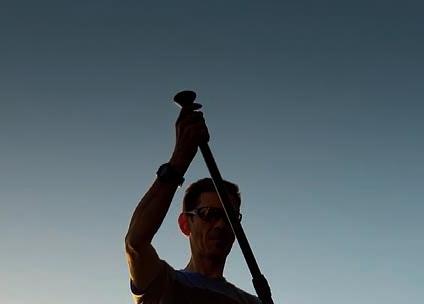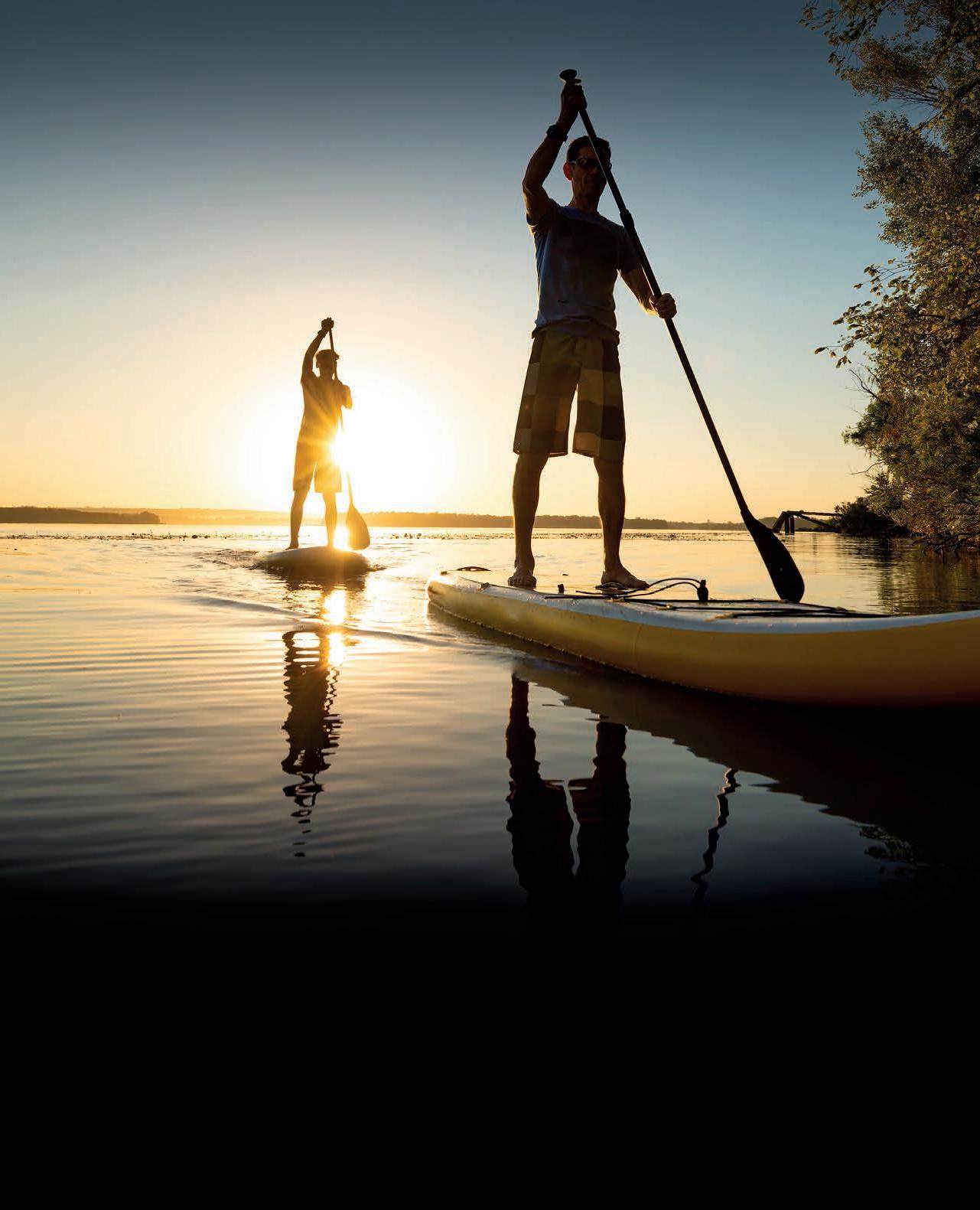
4 minute read
I could try

out of offi ce

I COULD TRY...

Stand-up paddle boarding
Paddleboarding was already growing in popularity even before social distancing and outdoor activities became our best option to stay in shape. William Ham Bevan fi nds out what’s involved
STAND-UP PADDLEBOARDING A great part of the sport’s appeal is its – SUP for short – has been one of accessibility, says Matthew Barker Smith the fastest-growing water sports of SUP Gower (supgower.com), which of the past decade. Th e Covid-19 provides tuition and excursions on the pandemic delivered a further tidal surge Gower Peninsula, South Wales. “Th ey’re in its popularity, as people sought socially like bicycles of the sea,” he says. “Anyone distanced ways to get outdoors and shake can jump on a bike and learn to ride it, off the after-eff ects of lockdown. and it’s the same thing with SUP.”
Where can you do it?
In the UK, there are few restrictions as to where you are allowed to paddleboard on the sea, but plenty of places where you shouldn’t. Local knowledge is essential: Sup Hub UK maintains useful maps of where you can fi nd it at suphubuk.com
Paddleboarding on rivers, canals and lakes may require a permit. British Canoeing or Canoe Wales membership gives access to around 3,000 miles of waterways across England and Wales (£45; britishcanoeing.org uk, canoewales. com). In Scotland, ‘Right to Roam’ legislation means permission is not normally required, and Waterways Ireland (responsible for both NI and the Republic of Ireland) permits free paddling on the waterways it manages.
How do you get started?
It’s tempting just to blow up your board, pick up your paddle and go: most people can transition from kneeling to standing up in hours. “But it’s a myth that you can just take it up,” says Paul Hyman, founder and director of Active360 (active360.co.uk). “You see a lot of people out on the river doing it badly, having taught themselves bad habits. People can learn basic skills in a lesson or two.”
It’s a matter of safety, too. Mr Barker Smith says: “What we would want people to do, if they’ve just bought a board or are thinking about it, is to have at least a one-hour introductory lesson. Th e RNLI has experienced a big uptick in SUP rescues over the past two years. You should be switched on to what you’re getting into.”
If you have an infl atable board, you can roll it up in a bag and take it anywhere
What are the benefi ts?
Even a recreational paddle can provide a decent physical workout: you can expect to burn up to 430 calories an hour, according to SUP World magazine. Enthusiasts claim it develops balance, stamina and strength more eff ectively than sit-down paddle sports, and involves a greater number of muscle groups. Mr Barker Smith says: “It targets your core, and depending on how aggressively you attack the water, it works your shoulders and arms. It’s also a good workout for your legs, because you’re stabilising at the same time.”
Th e mental benefi ts are just as signifi cant – not least the chance to de-stress in beautiful scenery. “Our clients get such a great opportunity to connect with nature in a city,” says Mr Hyman. “Th e Th ames is teeming with wildlife. And because you’re in an elevated position, you get a great view of nature around the river or canal.”
What does it cost?
Introductory sessions are inexpensive, and are the best way of fi nding out whether you’ll take to paddleboarding. A two-hour adult group lesson with Active360 is £59pp, launching from Kew, Brentford, Paddington or Richmond, while SUP Gower off ers similar sessions for £44.
If investing in your own equipment, you’ll need a board and paddle that suits your build, expertise and level of ambition. If you’ve taken an introductory lesson, you’ll be able to get advice from your provider. Otherwise, try to visit a board shop or speak with sales staff before purchasing.
Picking the cheapest can be a false economy. “You can buy good boards for £500, but there’s a lot of stuff that’s not so good around the £300 mark,” says Mr Hyman. “We wouldn’t recommend buying cold, off the net. You could end up with something that’s a hazard. If the board’s too small and you keep falling off , you can easily tire out and get into trouble.”
Th e right safety equipment is a must, starting with the leash that keeps you attached to the board. Depending on where you’re paddling, you may need a coiled or straight cord, attached at the waist, calf or ankle. A personal fl otation device is recommended in many situations, and since this is the UK and not Hawaii, a wetsuit or weatherappropriate clothing is needed.
Online safety checklists are available from British Canoeing
at Go Paddling (gopaddling.info), and from the RNLI (rnli.org).



